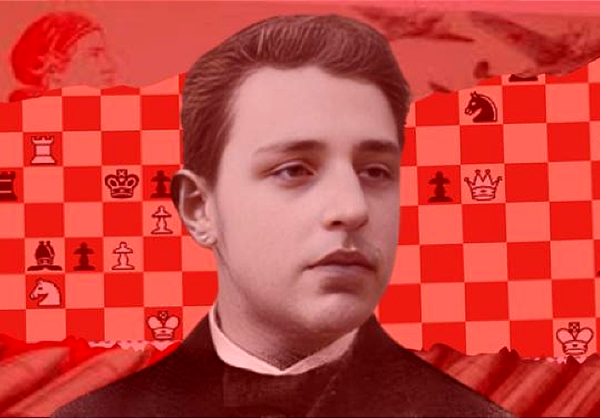The best of When The Going Gets Weird
I'm going to take a bit of a break from the newsletter over the holidays, to be with family and probably eat too much, and I hope you are doing the same with your families for the holidays, or keeping the holiday in whatever way makes you happy. To keep you occupied in your down time, here's a collection of some of my favourite items from the last few months of newsletters. See you in the New Year!
Mathew
1) Librarian keeps the love notes and doodles she finds written in books:
In her 20 years as a librarian, Sharon McKellar has unearthed all kinds of left-behind personal items — from doodles to recipes to old photographs — nestled between the pages of returned library books. She carefully removes them and reads them, then she scans and uploads them to the library’s website after scrubbing any personal identifying information.

2) Photo of nearest star turns out to be slice of chorizo:
A photo tweeted by a famous French physicist supposedly of Proxima Centauri by the James Webb Space Telescope was actually a slice of chorizo. Étienne Klein, research director at France’s Alternative Energies and Atomic Energy Commission posted the photo last week, claiming it showed the closest star to the sun. Klein told French news outlet Le Point that his intention had been to educate people about fake news online.

3) The Classical Dictionary of the Vulgar Tongue:
In the stacks of the British Library, you’ll find something a little surprising: the Classical Dictionary of the Vulgar Tongue, a collection of 18th-century slang. Among the pages are such listings such as “cheeser,” another word for a fart; an “Admiral of the narrow seas,” someone who drunkenly vomits into the lap of the person sitting opposite him; and “to dance upon nothing,” meaning “to be hanged.

4) The Spanish town whose residents are descended from Japanese samurai
Approximately 650 residents of Coria del Rio, a small Spanish town near Seville, use the surname Japón (originally Hasekura de Japón), because they are descendants of six samurai who visited the region as part of the first official Japanese delegation to Spain, in the 1600s. Hasekura Tsunenaga, whose statue sits in the town square, led the delegation as they visited the Spanish court of King Philip III and the Vatican, and then established an embassy. The name Hasekura de Japón first appeared on an official document in 1646.

5) The day a B-52 loaded with nukes crashed into a small town
Sixty years ago, at the height of the Cold War, a B-52 bomber disintegrated over a small Southern town, crashing with two 3.8-megaton thermonuclear bombs on board. A 17-year-old recalls running out to the porch of his family’s farm house just in time to see a flaming B-52 bomber—one wing missing, fiery debris rocketing off in all directions—plunge from the sky and plow into a field.

6) Three amateur mystery hunters cracked the Zodiac Killer’s 50-year-old cipher
The serial killer known as “the Zodiac killer” — who has still never been identified — liked to send secret coded messages to police. The message known as the “340 code” has stumped both amateur and professional cryptographers alike for decades. The NSA couldn’t crack it. Neither could the Naval Intelligence Office or the FBI. For more than fifty years, the cipher has remained an unsolvable enigma.

7) The most successful pirate in history was a woman named Ching Shih
Imagine Al Capone. Now imagine that, instead of running Chicago’s Mafia, Capone comes to control most of the criminal gangs operating in America. He destroys or absorbs his rivals, to the point where more gangsters work for him than are enlisted in the US Army. But then Capone wants to retire. Rather than buying a private island, he decides he’d prefer to stay in the US. Instead of dying in jail from syphilis, he works out a deal with the government. He gets a nice mansion in Napa Valley, with a generous pension.

8) Seal breaks into New Zealand home, traumatises cat and hangs out on couch
A curious young seal has been returned to the sea after breaking into a New Zealand home, harassing the resident cat, hanging about in the hallway for a couple of hours while the children slept upstairs, and miraculously ruining nothing. The Ross family of Mt Maunganui were more than a little surprised to find the New Zealand fur seal in their home, which is about 150m from the shore

9) Brazil receives the embalmed heart of a Portuguese monarch
The embalmed heart of the Portuguese monarch who declared the independence of Brazil from Portugal 200 years ago was received with the military honors of a head of state in Brasilia on Tuesday at the start of bicentenary celebrations. The heart, kept in formaldehyde in a glass jar inside a gold urn, arrived at the presidential palace in an open Rolls Royce flanked by a mounted color guard and was received by President Jair Bolsonaro with a gun salute. Air Force planes flew past.

10) The architect who became the king of bank robberies
George Leonidas Leslie led a double life: By day, he was a distinguished architect who hobnobbed with New York City’s elite denizens; by night, he was one of history’s most prolific bank robbers. He studied the anatomy of locks, drafted up blueprints of banks, and invented mechanical safe-breaking devices. During his “career,” authorities estimated that his exploits accounted for 80% of all bank robberies in the entire US during his active years of 1869-78. Altogether, he stole at least $7m ($200m in today’s money)

11) Abraham Lincoln almost joined the infamous Donner expedition
Most people have heard of the Donner Party, a pioneer group that attempted to migrate to California in 1846-1847. For a variety of reasons — including taking the wrong trail — they moved too slowly through the mountains and got caught going through a treacherous pass in December. They were trapped without food, and of the 87 members of the original wagon train, only 48 survived by resorting to survival cannibalism. And Abraham Lincoln almost joined them.

12) A man who married a hologram can no longer communicate with his wife
Akihiko Kondo took his love for a fictional character one step further by holding a “getting married” ceremony with Hatsune Miku , a virtual singer who has starred in several video games. The ceremony took place in 2019, after the man was able to communicate with the hologram via Gatebox, a company that develops devices to holographically show characters that do not exist. But now the Gatebox software is no longer available, so he can no longer communicate with her.

13) Dream job: the Japanese man who gets paid to do nothing
Shoji Morimoto has what some would see as a dream job: he gets paid to do pretty much nothing. The 38-year-old Tokyo resident charges 10,000 yen ($71) an hour to accompany clients as a companion. “Basically, I rent myself out. My job is to be wherever my clients want me to be and to do nothing in particular,” Morimoto told Reuters, adding that he had handled some 4,000 sessions in the past four years.

14) The geographical oddity known as the “Northwest Angle”
Surrounded on all sides by water and Canada, Minnesota’s Northwest Angle is home to just 119 residents. Yet this small spit of land is unusual, in geographic terms at least – it only exists because of an old map-making mistake. It all started with the Treaty of Paris in 1783, when the formal boundaries of a fledgling America were set forth.

15) The man who had to tell the bees the Queen was dead
The official beekeeper to the Royal Family, John Chapple, 79, told MailOnline how he travelled to Buckingham Palace and Clarence House on Friday following news of The Queen’s death to inform the bees of the monarch’s passing. The ritual, which dates back hundreds of years, involves notifying honey bees of major events such as a death or marriage. While the traditions varied, “telling the bees” always involved notifying the insects of a death in the family—so that the bees could share in the mourning

16) Why did doctors and nurses who were treating a woman become deathly ill?
About 8:15 in the evening on February 19, 1994, paramedics wheeled a young woman into the emergency room of General Hospital in the southern California city of Riverside. Clad in shorts and a T-shirt, she was awake, but responded to questions with only brief and sometimes incoherent utterances. She was taking shallow, rapid breaths. Her heart was beating too rapidly. Soon, nurses and doctors were dropping like flies. In all, 23 of the 37 emergency room staff members experienced at least one symptom.

17) This man has arguably perfected the lost art of stone skipping
Kurt Steiner is the world’s greatest stone skipper. Over the past 22 years, he has won 17 tournaments in the United States and Europe, generating ESPN coverage and a documentary film. In September 2013, he threw a rock that skipped so many times it defied science. This year he hopes to smash records on both sides of the Atlantic, giving him a platform for sermonizing about a sport he believes is nothing short of a means for the redemption of mankind

18) Parkour athletes are turning off store lights in Paris
After taking a few steps back to get a running start, Hadj Benhalima dashed toward the building, pushed against its wall with his foot, propelled himself upward and stretched out his arm. At the peak of his leap, he flipped off a light switch, more than 10 feet off the ground. A click sound rang out, and the bright lights of a nearby barbershop went off instantly.

19) How a high-school student proved a key math theorem
Daniel Larsen is the youngest person to publish a crossword in The New York Times, at age 13. But his latest obsession felt different – for more than a year and a half, he couldn’t stop thinking about a certain math problem that has been around since the 1800s, one related to proving which numbers are prime and which are not. “His proof is really quite advanced,” said one math expert who read Larsen’s paper.

20) Mondrian painting has been upside down for 75 years
A painting by abstract Dutch artist Piet Mondrian has been hanging upside down in various museums since it was first put on display 75 years ago, an art historian has found. The 1941 picture, a complex interlacing lattice of red, yellow, black and blue adhesive tapes titled New York City I, has hung in Düsseldorf since 1980.




